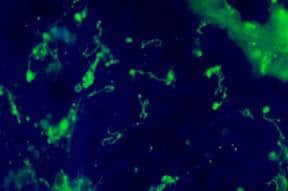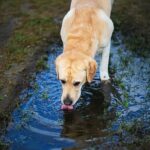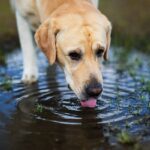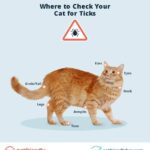This Centers for Disease Control & Prevention fact sheet is designed to assist pet owners in answering questions related to leptospirosis in pets.
Leptospirosis is a disease that can affect human and animals, including your pets. All animals can potentially become infected with Leptospirosis. While for many years occurrence among pets was rare, the disease has been diagnosed more frequently in the past few years. See below for information on how to protect yourself and your pets from leptospirosis and what to do if your pet becomes infected.

Infection
The bacteria that cause Leptospirosis are spread through the urine of infected animals, which can get into water or soil and can survive there for weeks to months. Humans and animals can become infected through contact with this contaminated urine (or other body fluids, except saliva), water, or soil. The bacteria can enter the body through skin or mucous membranes (eyes, nose, or mouth), especially if the skin is broken from a cut or scratch. Drinking contaminated water can also cause infection. Infected wild and domestic animals may continue to excrete the bacteria into the environment continuously or every once in a while for a few months up to several years.
If your pet has become infected, it most likely came into contact with the bacteria in the environment or was exposed to infected animals. Your pet may have been drinking, swimming, or walking through contaminated water. Because of increased building and development into areas that were previously rural, pets may be exposed to more wildlife, such as raccoons, skunks, squirrels, opossums, or deer that are infected with leptospirosis. Dogs also may pass the disease to each other, but this happens very rarely.
Signs and Symptoms
The clinical signs of leptospirosis vary and are nonspecific. Sometimes pets do not have any symptoms. Common clinical signs have been reported in dogs. These include:
- fever
- vomiting
- abdominal pain
- diarrhea
- refusal to eat
- severe weakness and depression
- stiffness
- severe muscle pain
- inability to have puppies.
Generally younger animals are more seriously affected than older animals.
If you think your pet may have leptospirosis, contact your veterinarian immediately. Your veterinarian can perform tests to determine whether or not your pet has the disease.
Treatment
If your pet has been confirmed by your veterinarian as having leptospirosis, the appropriate action to take will depend on the nature of contact with your pet. Normal daily activities with your pet will not put you at high risk for leptospirosis infection. Types of contacts that are considered to be high risk include:
- Direct or indirect contact with urine, blood, and tissues of your pet during its infection.
- Assisting in the delivery of newborns from an infected animal.
If you have had these types of high-risk contacts with your pet during the time of its infection, inform your physician. If common symptoms, such as fever, muscle aches, and headaches, occur within 3 weeks after a high-risk exposure, see your physician. Tests can be performed to see if you have this disease.
Leptospirosis is treatable with antibiotics. If an animal is treated early, it may recover more rapidly and any organ damage may be less severe. Other treatment methods, such as dialysis and hydration therapy may be required.
The time between exposure to the bacteria and development of disease is usually 5 to 14 days, but can be as short as a few days or as long as 30 days or more.
Prevention in Pets
To help prevent leptospirosis infection, keep rodent problems (rats, mice, or other animal pests) under control. Rodents can carry and spread the bacteria that causes this disease.
Get your pet vaccinated against leptospirosis. The vaccine does not provide 100% protection. This is because there are many strains (types) of leptospires (the bacteria that causes Leptospirosis), and the vaccine does not provide immunity against all strains. It is important to get your pet vaccinated again even if it gets leptospirosis because it can still get infected with a different strain of leptospires.
Pet owners should also take steps to prevent themselves and others from becoming infected with the disease due to an infected pet. The primary mode of transmission of leptospirosis from pets to humans is through direct or indirect contact with contaminated animal tissues, organs, or urine.
In some instances, shedding of leptospires in the urine may persist for as long as 3 months after infection as a result of inadequate or lack of treatment. Always contact your veterinarian and your physician if you have concerns about a possible exposure to an infected animal.
In addition, be sure to follow the below prevention guidelines:
- Do not handle or come in contact with urine, blood, or tissues from your infected pet before it has received proper treatment.
- If you need to have contact with animal tissues or urine, wear protective clothing, such as gloves and boots, especially if you are occupationally at risk (veterinarians, farm workers, and sewer workers).
- As a general rule, always wash your hands after handling your pet or anything that might have your pet’s excrement on it.
- If you are cleaning surfaces that may be contaminated or have urine from an infected pet on them, use an antibacterial cleaning solution or a solution of 1 part household bleach in 10 parts water.
- Make sure that your infected pet takes all of its medicine and follow up with your veterinarian.
If you have questions about this serious disease, Urban Animal can help. Call us and schedule an appointment for your companion pet.


